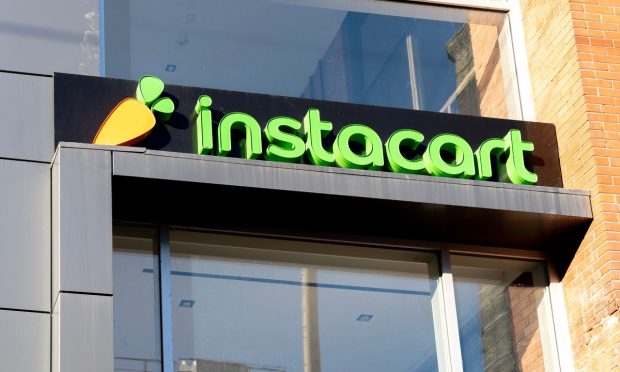Instacart’s Catering Feature Helps Grocers Challenge Restaurants for Big Orders

As food prices skyrocket, consumers are shifting their meal spending from restaurants to grocery stores, and Instacart is doing everything in its power to accelerate that shift.
Instacart announced Thursday (Aug. 4) that it is integrating catering software subsidiary FoodStorm’s technology into its app to power catering orders and delivery for grocers both through the aggregator’s marketplace and through its white-label fulfillment solutions. The integration comes 10 months after Instacart initially announced its acquisition of FoodStorm.
Read more: Instacart Acquires Catering Software Company in Push to Compete With Restaurant Aggregators
“Catering represents one of the highest margin categories for grocers, driving meaningful incremental growth for their business as consumer demand increases,” Instacart Vice President of Product Jeanette Barlow said in a statement. “In the first half of 2022, we’ve seen nearly a 20% increase in customers searching for ‘catering’ on Instacart compared to the same period last year.”
Barlow added that the integration enables grocers to “scale the reach of a highly profitable part of their business,” noting that, in the past, catering orders have been a friction-filled experience relying on manual systems that are “inefficient for both retailers and customers.”
The news comes as restaurants also step up their catering offerings. In April, Outback Steakhouse parent company Bloomin’ Brands announced that the steakhouse chain had launched a catering business at 481 of its United States locations.
See more: Outback Launches Catering
In May, global quick-service restaurant (QSR) sandwich giant Subway announced that it had redesigned its catering program with easy digital ordering options and that it had launched its offerings on corporate food solutions provider ezCater’s marketplace.
Read more: Subway Says Convenience Takes Priority Over Customization for Catering Customers
In an interview with PYMNTS, Subway Director of Catering Jenn Saunders-Haynes explained that as businesses mandate or encourage formerly remote workers to return to the office, offering complimentary food is “one of the biggest draws to ease the transition.”
The effect of this draw is compounded by consumers’ increasing frustration with and anxiety about rising food costs. The Consumer Price Index for All Urban Consumers (CPI-U), reported by the U.S. Bureau of Labor Statistics (BLS) last month, revealed that as prices for all items rose 9.1% year over year, food prices rose 10.4%. Food away from home (i.e., restaurant) prices rose 7.7% in that time, and food at home (i.e., grocery) prices rose 12.2%.
Additionally, consumers experience the impacts of food inflation even more than the price increases measured by the BLS. A national online study of 3,783 consumers conducted by PYMNTS this month revealed that consumers reported paying 20% to 30% more for retail and grocery purchases and to eat at restaurants.
See more: Why Retailers Should Worry About Inflation but Dread the Wealth Effect
In addition to wooing catering customers away from restaurants to grocers, Instacart has also been looking to gain share of stomach from restaurants in other categories. Earlier this year, the aggregator announced the launch of a web portal for grocers selling prepared meals, its Ready Meals Hub, explicitly positioning the hub as a budget-friendly alternative to restaurant takeout.
Read more: Instacart Aims to Price out DoorDash With Launch of Meal Delivery
“As inflation and other economic pressures impact households, more and more people are turning to grocery stores for easy meals instead of takeout,” Barlow wrote in a blog post Thursday. “…For grocers who are also facing economic pressure, prepared food and catering items are typically some of the most profitable items sold in-store.”
